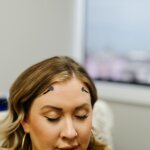There is a non-medication option that supports improvements in brain function to increase improvements in peak performance – micorcurrent neurofeedback therapy. Moreover, clients report that when receiving this type of therapy they experience improvements in focus resulting in optimal brain response leading to enhanced performance, higher-level problem solving and resolution of performance fears. The IASIS Microcurrent process is a building block approach. Each session builds on the other adding to the positive impact with improvement and client’s reporting sustainability increasing over time. In addition, the sessions for neurofeedback therapy naturally impact other systems in the body. As a result, clients reporting increased creativity, less brain fog, better sleep, improved ability to manage stress, improvements in memory, and reductions in roadblocks that previously held someone back from peak performance.

So how does microcurrent neurofeedback work?
Microcurrent neurofeedback passively induces positive change in the brainwaves. The device used in is and EEG device that is FDA registered. The neurofeedback therapy device assists the brain by providing brief microcurrent stimulation. This results in temporary changes in the client’s brainwaves. Each session encourages the release of excess amyloid proteins, including alpha and beta amyloid proteins. This release promotes a shifting from unhealthy to healthy, more optimal, brain patterns. Clients report the microcurrents are not noticeable, and approximately 85% of clients report positive improvement in 1-3 sessions. In addition, this type of neurofeedback therapy requires no awareness or any effort on the part of the client. As a result, most clients report positive results that sustain in 12-20 sessions.

If you want more information on this next generation of treatment for peak performance, check out my website for more detailed information and success stories on IASIS microcurrent neurofeedback therapy.

